Indian Peafowl
- December 18, 2023
- 0 comment
The Indian Peafow(Pavo cristatus) belongs to the family Phasianidae and is renowned for its striking appearance, particularly the vibrant and iridescent plumage of the male, known as a peacock. The female is called a peahen, and together they are commonly referred to as peafowl. The scientific name “Pavo cristatus” is used to specifically identify the species of peafowl native to the Indian subcontinent.
Physical Appearance

Indian Peafowl
- Lifespan: 15 years
- Habitat: Forests, Grasslands, and Cultivated areas
- Diet: Grains, Seeds, Insects, Small mammals, and Reptiles.
- Size: 90 to 130 cm
- Weight: 4 to 6 kilograms
- Wingspan: 4.6 to 5.2 feet
- Conservation Status: Least Concern
- Population Trend: Generally Stable
The Indian Peafowl’s physical appearance plays a crucial role in courtship displays and mate selection. The elaborate plumage of the peacock is a prominent example of sexual dimorphism, where the male’s features have evolved to attract females during the mating ritual.
Species Type of Indian Peafowl
The Indian Peafowl, scientifically known as Pavo cristatus, belongs to the species category. It is a specific species within the peafowl genus Pavo, and its native range includes parts of South Asia, with India being a primary habitat. The species is characterized by its vibrant plumage, with the male, or peacock, displaying distinctive iridescent colors during courtship displays. The female is known as a peahen, and both sexes contribute to the overall species’ ecological role and behavior.
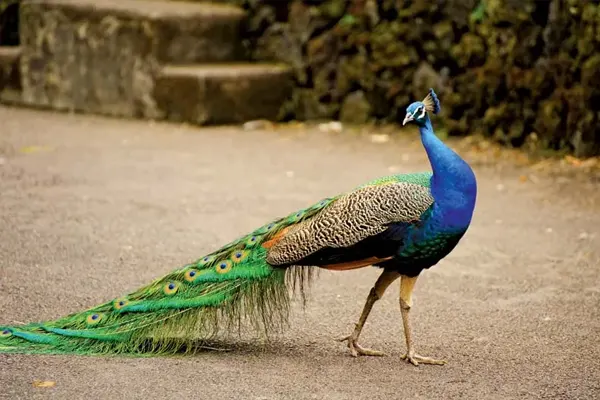

- Kingdom: Animalia
- Phylum: Chordata
- Class: Aves
- Order: Galliformes
- Family: Phasianidae
- Subfamily: Pavoninae
- Genus: Pavo
- Species: Pavo cristatus
The Indian Peafowl is primarily recognized as a single species (Pavo cristatus), there may be regional variations or subspecies. These can be influenced by factors such as geography and habitat. However, the classification of subspecies can be subject to ongoing research and debate among ornithologists.
Feather Coloration of Indian Peafowl
The vivid and intricate feather coloration of the Indian Peafowl plays a crucial role in courtship displays, where the male showcases his plumage to attract a mate. This remarkable coloration is not only a visual spectacle but also a key aspect of the species’ reproductive behavior.
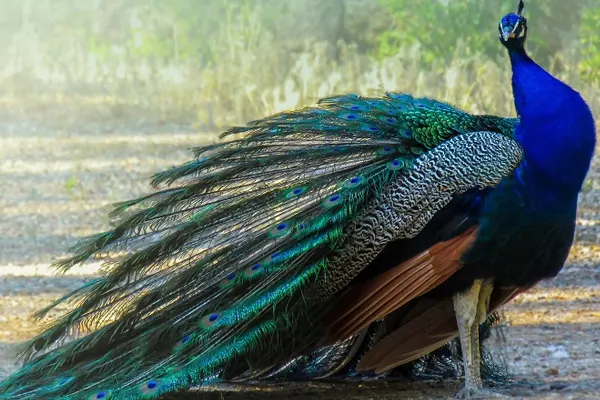
Male
- Body: The body of the male peafowl is adorned with vibrant and iridescent hues, including striking shades of electric blue, emerald green, and bronze. These colors result from microscopic crystal-like structures that refract light, creating the dazzling effect.
- Tail Feathers: The most iconic feature is the long and ornate tail feathers, or “train,” which is covered in iridescent “eye” markings, or ocelli. These markings are predominantly blue and green, creating a mesmerizing pattern. During courtship displays, the peacock fans out this elaborate tail to attract females.
- Crest: The peacock also has a distinctive crest on its head, consisting of feathers that can be raised in display. This crest complements the overall impressive appearance during courtship rituals.
Female(Peahen)
- The female, or peahen, exhibits more subdued and cryptic coloration, which serves as effective camouflage during nesting and foraging.
- The peahen’s plumage is typically a mix of brown, beige, and green, providing her with a more inconspicuous appearance compared to the flamboyant colors of the male.
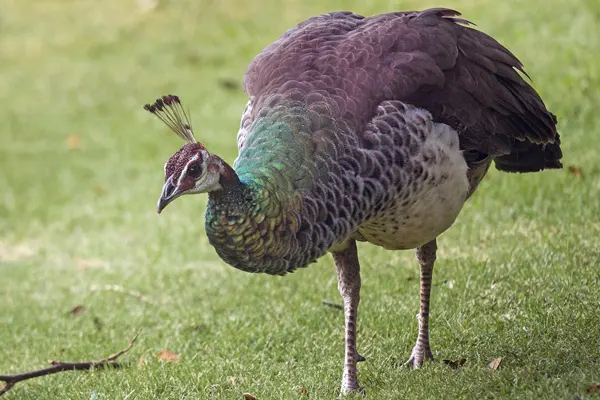
The vibrant colors in males are not solely due to pigments. They are also produced by structural coloration, where the feather structure interacts with light to create iridescent effects and shimmering hues. The eyespots on the train feathers are caused by a combination of pigmentation and light refraction within the feather barbules.
Flight Characteristics of Indian Peafowl
The Indian Peafowl is capable of flight and may use it for specific purposes, it is not a species known for extensive aerial travel. Its anatomy and behavior are more adapted to ground-based activities, including foraging and display behaviors.
- Limited Flight: While peafowls are capable of flight, their flights are generally short and involve bursts of rapid wing beats. They are not known for long-distance or prolonged flights.
- Powerful Flyers: When the need arises, such as to escape from predators or to roost in trees at night, peafowls can take to the air with strong and swift wing beats.
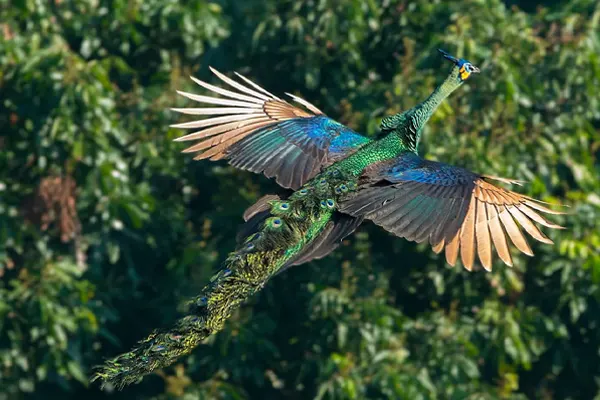
- Prefer Ground Foraging: The primary mode of locomotion for peafowls is walking or running on the ground. They are adept at foraging for food, which includes grains, seeds, insects, and small reptiles, on the forest floor.
- Roosting Habits: At night, peafowls often roost in trees to avoid ground-level predators. They use their wings to fly up into trees where they perch on branches.
- Heavy Body, Short Wings: The peafowl’s relatively heavy body and short wings contribute to its preference for terrestrial activities over sustained flight.
Despite their limited flight abilities, Indian peafowl are excellent gliders. Their long tails and broad wings allow them to cover long distances horizontally with minimal effort, once they reach enough height.
Migration Patterns of Indian Peafowl
The Indian Peafowl, or Pavo cristatus, is generally not known for long-distance migration. Instead, its behavior is characterized by more localized movements in response to factors such as seasonal changes, food availability, and nesting requirements.
- Seasonal Movements: While not true migration in the traditional sense, Indian Peafowls may exhibit seasonal movements in search of food and suitable breeding grounds. These movements are often influenced by changes in weather and habitat conditions.
- Nomadic Behavior: In response to variations in food resources, peafowls may engage in nomadic or semi-nomadic behavior. They can travel to areas with abundant food, especially during the breeding season.
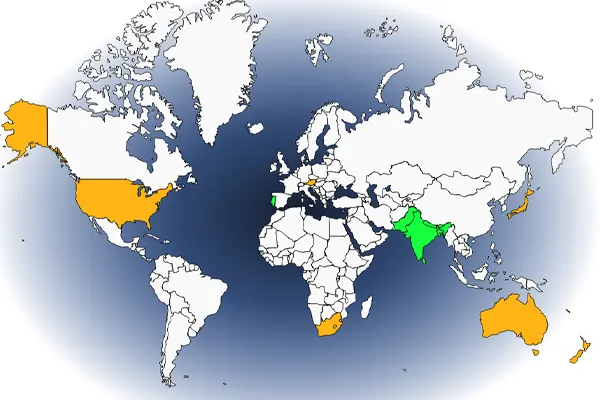
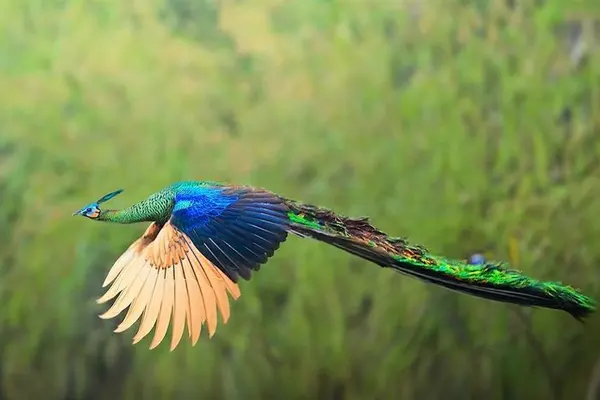

- Roaming for Foraging: Peafowls are known to roam over relatively large areas in search of a varied diet, which includes seeds, insects, small mammals, and reptiles. This movement is not a set migration route but rather a response to local resource availability.
- Altitudinal Movements: In some regions, peafowls may move to different altitudes in response to changing environmental conditions. For example, they might move to higher ground during the hot summer months.
- Resident Populations: Many Indian Peafowls are resident in their home range, and their movements are more localized. They establish territories and may remain within a certain area for extended periods, especially if the habitat provides the necessary resources.
The behavior of Indian Peafowls can vary depending on factors such as regional climate, habitat type, and the presence of human disturbances. While they are not known for extensive migrations like some bird species, their movements are dynamic and influenced by the need for resources and suitable breeding conditions.
Habitat & Distribution of Indian Peafowl
The adaptability of the Indian Peafowl to a range of habitats has contributed to its widespread distribution across South Asia. While native to this region, the species has also been introduced to other areas where it can thrive in diverse environmental conditions.
- Geographic Range: The Indian Peafowl is primarily found in South Asia, including India, Sri Lanka, Nepal, Bhutan, and Bangladesh.
- Diverse Environments: This species is remarkably versatile in terms of habitat, inhabiting a range of environments such as deciduous and evergreen forests, grasslands, scrublands, and cultivated areas.
- Proximity to Water: Indian Peafowls often inhabit regions close to water sources like rivers, lakes, and ponds. These areas provide not only drinking water but also suitable conditions for foraging.
- Roosting Behavior: They exhibit roosting behavior, taking to trees during the night to avoid ground-level predators. Forested areas with tall trees are conducive to this behavior.
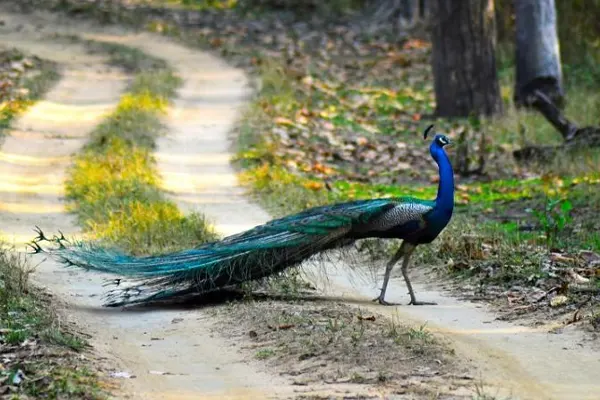
Distribution
- India: As the national bird of India, the Indian Peafowl is widely distributed throughout the country. It thrives in diverse ecosystems, from the foothills of the Himalayas to the peninsular regions.
- Sri Lanka: The species is also native to Sri Lanka, where it can be found in various habitats, including both natural and cultivated landscapes.
- Nepal and Bhutan: Indian Peafowls have a presence in parts of Nepal and Bhutan, occupying suitable habitats within these countries.
- Bangladesh: In Bangladesh, the species is distributed across different regions, including forests and areas with agricultural cultivation.
- Introduced Populations: Due to their captivating appearance, Indian Peafowls have been introduced to other parts of the world as ornamental birds. Introduced populations have sometimes established themselves successfully in regions with favorable conditions.
Behavioral Traits of Indian Peafowl
The behavioral traits of Indian peafowl is crucial for conservation efforts. It helps us develop strategies to address habitat loss, human-wildlife conflicts, and threats to their breeding success.
- Sexual dimorphism: Males are significantly larger and more brightly colored than females, primarily for attracting mates during breeding season.
- Polygamy: Males maintain harems of several females during breeding season, though they do not actively guard their mates.
- Leks: Males display their plumage and vocalize at specific display grounds called leks, competing for the attention of females.
- Females choose mates: Females select their mate based on the male’s display, favoring traits like large train size and vibrant colors.
- Cooperative breeding: Peafowl hens often form “crèches” where they lay their eggs communally and take turns incubating and raising the chicks.
- Social hierarchies: Within flocks, there are subtle social hierarchies with dominant individuals having priority access to food and mates.
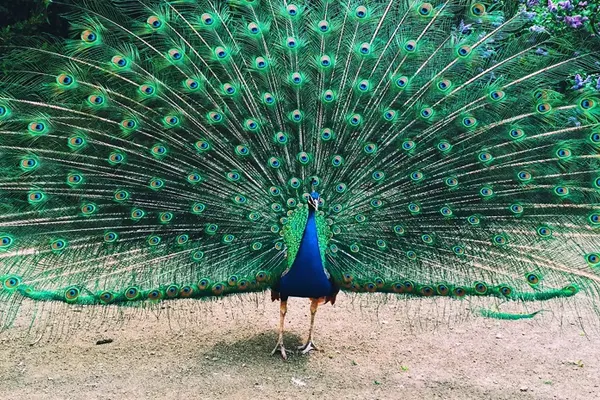
- Courtship Displays: One of the most iconic behaviors of the Indian Peafowl is the elaborate courtship display performed by the male, or peacock, during the breeding season. This display involves the fanning out of the iridescent tail feathers, revealing the striking eye-spots, while the peacock vocalizes and performs a dance to attract a mate.
- Territoriality: Both males and females can be territorial, especially during the breeding season. Males establish territories that they defend against other males, while females may defend nesting areas.
- Vocalizations: Peafowls are known for their distinctive calls. The peacock produces a loud, high-pitched “meow” or “honk,” especially during the breeding season, as part of its courtship ritual. Peahens emit softer calls.
- Roosting Behavior: At night, peafowls roost in trees for protection against ground predators. They fly up to roosting spots in trees using their relatively short and rounded wings.
- Foraging: Peafowls are omnivores and forage on the ground for a variety of food, including grains, seeds, insects, small mammals, and reptiles. They use their beaks to scratch and peck at the ground in search of food.
These behavioral traits provides insight into the complex social and ecological dynamics of the Indian Peafowl. These behaviors are essential for their survival, reproduction, and successful adaptation to their environment.
Role in Ecosystem of Indian Peafowl
The ecological roles of the Indian Peafowl emphasizes its importance in maintaining the balance and functioning of the ecosystems it inhabits. Conservation efforts aimed at protecting these birds also contribute to the preservation of the broader biodiversity within their native range.
- Seed Dispersal: Peafowls are omnivores and consume a variety of foods, including fruits and seeds. As they forage, they inadvertently assist in seed dispersal by excreting seeds in different locations. This contributes to the regeneration and distribution of plant species within their habitat.
- Insect Control: Peafowls feed on insects, including beetles, caterpillars, and other invertebrates. By doing so, they help control insect populations, playing a role in pest management within their ecosystem.
- Habitat Maintenance: The foraging behavior of peafowls involves scratching and pecking at the ground, which helps aerate the soil. This activity can contribute to nutrient cycling and the maintenance of a healthy habitat.
- Territorial Influence: The territorial behavior of peafowls, especially during the breeding season, can indirectly influence the distribution of other species within the ecosystem. They may impact the behavior and distribution of smaller birds, mammals, or even other ground-dwelling species.

- Prey for Predators: As ground-dwelling birds, peafowls serve as prey for a variety of predators, including large cats, snakes, and birds of prey. Their presence contributes to the trophic dynamics of their ecosystem.
- Biodiversity Support: The presence of peafowls in an ecosystem contributes to overall biodiversity. Their adaptability to various habitats means they can inhabit different ecological niches, adding to the diversity of species within an area.
- Cultural and Ecotourism Value: The Indian Peafowl has cultural significance in many regions and is a symbol of beauty. This cultural value can translate into ecotourism, contributing to local economies and conservation efforts.
- Indicator of Ecosystem Health: The well-being and reproductive success of peafowls can serve as an indicator of the health of their ecosystem. Changes in their population or behavior may signal broader ecological shifts.
Peafowl hold significant cultural and religious symbolism in many regions, particularly in India. Their presence is often associated with prosperity and good fortune, promoting environmental stewardship and protecting their habitats.
Dietary Habits of Indian Peafowl
The diverse diet of the Indian Peafowl reflects its adaptability to different habitats and its role as an omnivore in the ecosystem. While they primarily forage on the ground, their ability to consume a range of foods contributes to their ecological impact, including seed dispersal and pest control.
- Vegetation and Seeds: A significant portion of the Indian Peafowl’s diet consists of vegetation, including leaves, grasses, and various plant parts. They also consume a variety of seeds, contributing to their role in seed dispersal within their ecosystem.
- Insects and Invertebrates: Peafowls are opportunistic foragers and actively hunt for insects and invertebrates. Their diet may include beetles, ants, termites, caterpillars, and other small arthropods.
- Small Vertebrates: In addition to insects, Indian Peafowls consume small vertebrates, such as amphibians, reptiles, and small mammals. They may catch and eat frogs, lizards, rodents, and even snakes.
- Grains and Crops: Peafowls are known to feed on grains and crops, especially in agricultural areas. This can sometimes lead to conflicts with farmers, as they may damage crops.

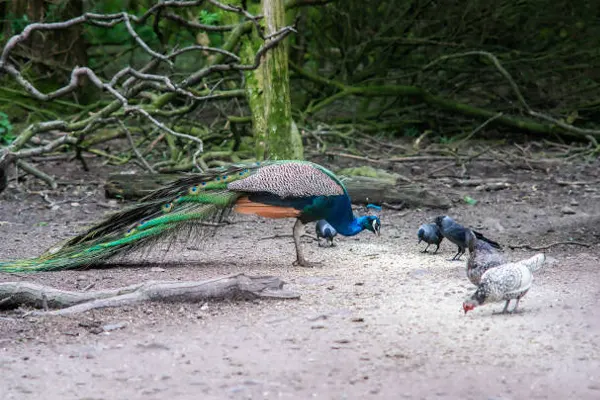
- Berries and Fruits: The diet of Indian Peafowls may include berries, fruits, and other plant-derived foods. They play a role in the dispersal of seeds through their consumption and subsequent excretion.
- Foraging Behavior: Peafowls use their strong and pointed beaks to scratch at the ground, searching for food. Their foraging behavior involves both pecking and scratching, allowing them to access a variety of food sources.
- Water Intake: While they obtain moisture from their diet, Indian Peafowls also require access to water for drinking. They are often found near water sources such as rivers, lakes, or ponds.
- Chick Diet: During the initial stages of life, peafowl chicks primarily feed on insects and small invertebrates. As they grow, their diet gradually shifts to include a wider variety of foods.
The Indian peafowl, with its stunning plumage and majestic presence, is a captivating creature. But beyond its beauty, lies a fascinating dietary life. As omnivores, Indian peafowl feast on a diverse range of food sources, adapting their menu to the changing seasons and available resources.
Interesting Facts of Indian Peafowl
The next time you encounter this magnificent bird, remember, it’s not just a pretty face. The Indian Peafowl is a creature of complex behaviors, fascinating adaptations, and rich cultural significance. Let its beauty inspire you to explore the wonders of the natural world and appreciate the incredible diversity of life on our planet.
- The King of Colors: The male peacock’s breathtaking train, a cascade of iridescent blues, greens, and golds, isn’t just for show. It’s actually a complex structure of elongated upper tail coverts, each adorned with an eye-catching “eye” pattern. These eyespots act like mirrors, reflecting light and creating an mesmerizing display to attract mates.
- A Silent Screamer: Don’t be fooled by the peacock’s majestic silence. When it comes to courtship, he unleashes a loud, piercing “pan” call that can be heard over a mile away! This sonic boom serves as a warning to rivals and a declaration of his dominance to potential mates.
- A Master of Disguise: The female peacock, often overshadowed by her flamboyant counterpart, is a master of camouflage. Her dull brown plumage blends perfectly with the forest floor, keeping her safe while incubating eggs and raising chicks.
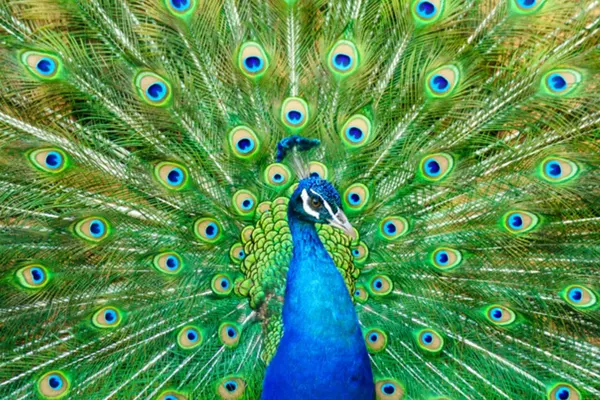
- A Culinary Adventurer: You might think such a regal bird would have a sophisticated palate, but the Indian Peafowl is an adventurous eater! They’re omnivores, relishing everything from seeds and fruits to insects, lizards, and even the occasional snake. They’re even known to scavenge for carrion, playing a vital role in the ecosystem as natural cleaners.
- A Symbol of Luck and Prosperity: In India, the peacock is revered as a symbol of good luck, prosperity, and even immortality. Its presence is believed to bring blessings and ward off evil. This cultural significance has helped protect the peacock and its habitat for centuries.
- A Global Traveler: While native to the Indian subcontinent, the Indian Peafowl has been introduced to many parts of the world, gracing landscapes from Europe and Africa to North America. Their adaptability and resilience have allowed them to thrive in diverse environments, becoming a familiar sight in parks and gardens around the globe.
Nesting Habits of Indian Peafowl
The nesting habits of the Indian Peafowl provides insight into their reproductive behaviors and the importance of choosing concealed locations to enhance the survival chances of their offspring.
- Nest Site Selection: Peahens, the females, are responsible for selecting a suitable nest site. They typically choose concealed locations on the ground, often in tall grass, dense vegetation, or under bushes. The choice of a well-hidden nest helps protect the eggs from potential predators.
- Nest Construction: The nest construction process is relatively simple. Peahens create a shallow depression in the ground by scratching and scraping away debris, forming a nest lined with leaves, twigs, and other natural materials. The nesting material helps provide some insulation and protection for the eggs.
- Egg Laying: Once the nest is prepared, the peahen lays a clutch of eggs. A typical clutch size can range from four to eight eggs. The eggs are large, elliptical, and have a pale coloration, which aids in camouflage within the nest.
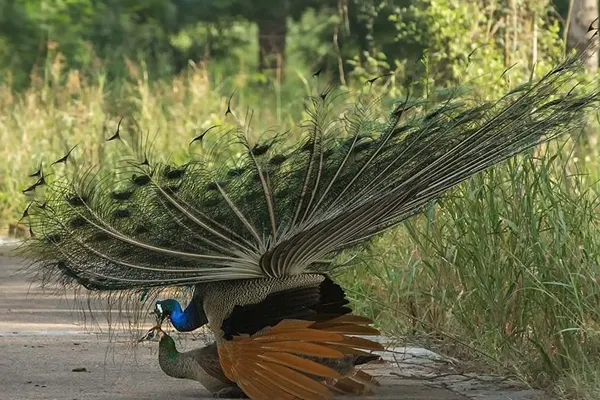
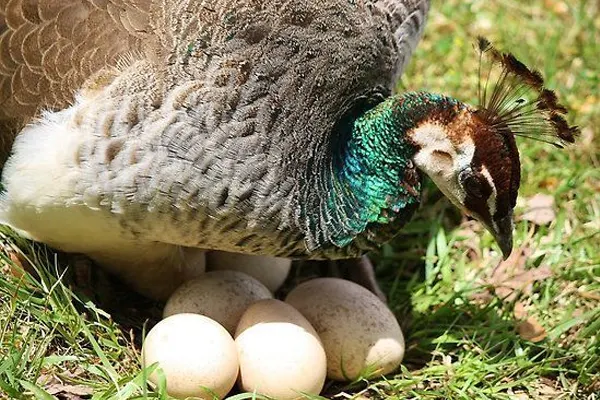
- Incubation: After laying the eggs, the peahen assumes the role of incubation. She spends the majority of her time on the nest, using her body to cover and protect the eggs. The incubation period is around 28 days. During this time, the peahen may leave the nest briefly to forage for food and then return to continue incubation.
- Hatching: Upon the completion of the incubation period, the eggs hatch, and the chicks emerge. Peafowl chicks are precocial, meaning they are born in a relatively advanced state and are capable of moving around shortly after hatching.
- Chick Care: The peahen continues to care for and protect the chicks after hatching. The chicks follow the mother, learning essential foraging and survival skills. The mother provides guidance and protection during the vulnerable early stages of the chicks’ lives.
- Parental Role: While the female plays a central role in nesting, incubation, and caring for the chicks, the male (peacock) generally does not contribute to these activities. Males may establish territories and engage in courtship displays during the breeding season.
- Territorial Defense: Both males and females may exhibit territorial behavior around the nesting site, especially during the breeding season, to protect the eggs and chicks from potential threats.
The fascinating nesting habits of Indian peafowl and understanding the threats they face, we can contribute to their protection and ensure their continued existence for future generations.
Calls & Vocalizations of Indian Peafowl
The vocalizations of Indian Peafowls are integral to their social structure, reproductive behavior, and overall communication within the group. The combination of visual displays and vocalizations during courtship contributes to the complex and captivating behaviors of these iconic birds.
- Peacock Call
- The male peafowl, or peacock, produces a loud, high-pitched call often described as a “meow” or “honk.” This call is most prominent during the breeding season.
- The peacock’s call is a crucial element of its courtship display, accompanying the impressive visual spectacle of fanning its ornate tail feathers and performing a dance to attract females.
- Peahen Call
- The female, or peahen, also produces vocalizations, but her calls are generally softer and less intense compared to the male. Peahens may emit a series of short calls, sometimes described as “quack” or “cluck” sounds.
- The peahen’s calls are part of the communication between mates and may signal receptivity during courtship.

- Communication Signals:
- Vocalizations are essential for communication within the peafowl community. Calls can convey information about the presence of potential threats, the location of food sources, and the overall well-being of the group.
- The distinctive calls can serve as a means of maintaining contact between individuals, particularly when they are dispersed in a larger area.
- Alarm Calls:
- Peafowls are known to produce specific alarm calls in response to potential dangers or threats. These calls may alert others to the presence of predators, prompting a collective response such as seeking cover or taking flight.
- The alarm calls can vary in intensity and pitch, helping convey the level of urgency and potential danger.
- Territorial Calls:
- Both males and females may produce territorial calls to assert dominance or defend a specific area, especially during the breeding season. Territorial vocalizations can deter other peafowls from encroaching on their space.
The calls and vocalizations of Indian peafowl provides valuable insights into their behavior, social interactions, and even their environment. By listening closely, we can gain a deeper appreciation for the complex communication system of these magnificent birds.
Conservation Status of Indian Peafowl
The conservation status of the Indian Peafowl highlights the need for continued vigilance and proactive measures. While their current population status offers some comfort, ongoing threats require us to remain committed to safeguarding their future. By addressing the challenges and supporting conservation efforts, we can ensure the majestic Indian Peafowl continues to grace our landscapes for generations to come.
- Habitat protection: Establishing protected areas, implementing sustainable land management practices, and restoring degraded habitats are crucial for their long-term survival.
- Public awareness: Raising awareness about their ecological importance and cultural significance can encourage people to protect them and their habitats.
- Research and monitoring: Studying population trends, identifying specific threats, and developing effective conservation strategies are essential for their future.
- Combating illegal trade: Strengthening enforcement of wildlife protection laws and promoting sustainable alternatives to feather trade can help curb poaching and illegal trade.
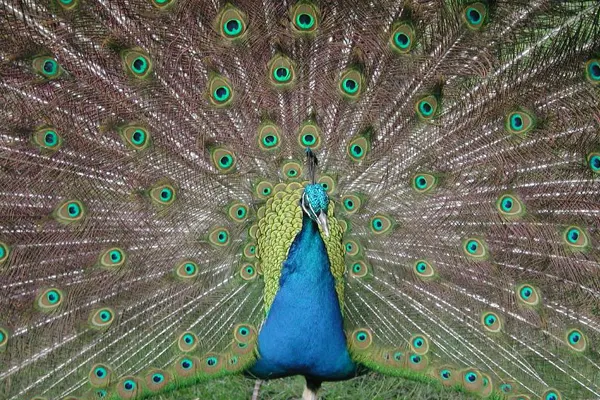
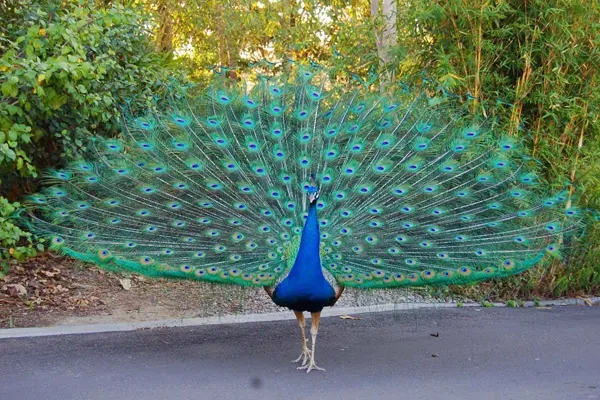
Concerns and Threats
- Habitat loss: Deforestation, agricultural expansion, and infrastructure development continue to threaten their natural habitats, leading to fragmentation and loss of nesting and foraging grounds.
- Poaching and hunting: Despite legal protection in many regions, illegal hunting and poaching for feathers and meat remain a concern, especially in some areas.
- Pollution: Pesticide and fertilizer use in agriculture can contaminate water sources and food, impacting their health and reproduction.
- Human-wildlife conflicts: Competition for resources with humans, such as in agricultural fields, can lead to conflicts and persecution of peafowl.
- Climate change: Extreme weather events and changing rainfall patterns can disrupt their breeding cycles and impact food availability.
Research and Ongoing Studies of Indian Peafowl
The Indian Peafowl, with its captivating beauty and intricate social behavior, has captivated researchers for centuries. Numerous ongoing studies delve into various aspects of their lives, seeking to understand them better and inform conservation efforts.
Population Dynamics and Habitat Use
- Monitoring populations: Tracking population trends through surveys and telemetry studies helps assess their status and identify areas of concern.
- Habitat use and selection: Understanding how peafowl utilize different habitats and the factors influencing their choices is crucial for habitat protection and restoration.
- Impact of human activities: Studies investigate how human activities like agriculture, infrastructure development, and tourism impact peafowl populations and their behavior.
Behavior and Social Interactions
- Communication and vocalizations: Understanding the diverse calls and vocalizations used by peafowl sheds light on their communication system, social interactions, and mating strategies.
- Cooperative breeding and crèche formation: Research explores the benefits and dynamics of cooperative breeding in peafowl, where females may lay eggs communally and raise chicks together.
- Mating behavior and competition: Studies analyze male display strategies, female mate selection, and competition among males, providing insights into their reproductive success and social hierarchy.
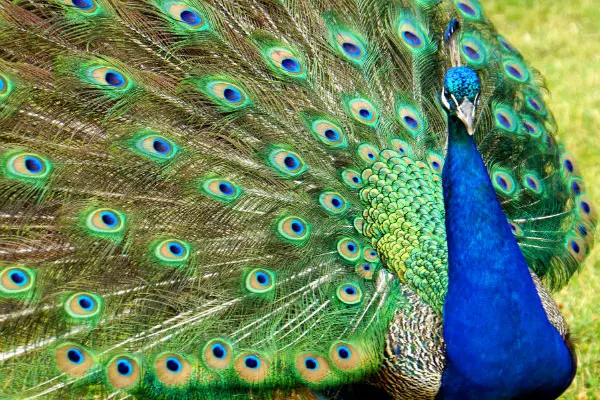
Genetic Studies and Evolutionary Insights
- Genetic diversity and population structure: Understanding the genetic makeup of different peafowl populations helps assess their vulnerability and inform conservation strategies.
- Evolution of plumage and display: Research explores the evolutionary pressures behind the development of the peacock’s flamboyant train and its role in sexual selection.
- Comparative studies: Comparing peafowl with other bird species can provide insights into the evolution of their unique behaviors and adaptations.
This active field of study continues to unlock new knowledge about these fascinating birds, informing conservation efforts and ensuring their continued presence in our ecosystems.
Educational and Ecotourism of Indian Peafowl
The combination of education and ecotourism provides a holistic approach to appreciating and conserving Indian Peafowls. By fostering a connection between people and nature, these initiatives play a vital role in promoting environmental stewardship and sustainable practices.
- School Programs and Nature Education: Indian Peafowls are often featured in educational programs at schools, nature centers, and zoos. Their vibrant plumage, unique behaviors, and cultural significance make them intriguing subjects for learning about biodiversity and ecology.
- Wildlife Education and Awareness: Conservation organizations leverage the charismatic nature of Indian Peafowls to raise awareness about local ecosystems, biodiversity, and the importance of preserving natural habitats. Educational materials, workshops, and outreach programs often feature these birds.
- Biology and Behavior Studies: Students and researchers engage in studying the biology and behavior of Indian Peafowls, providing valuable insights into avian ecology, reproductive strategies, and the role of birds in ecosystems.
- Cultural and Mythological Significance: Learning about the cultural and mythological significance of Indian Peafowls in various societies provides an avenue for exploring cultural diversity and understanding the symbolic roles of animals in human history.
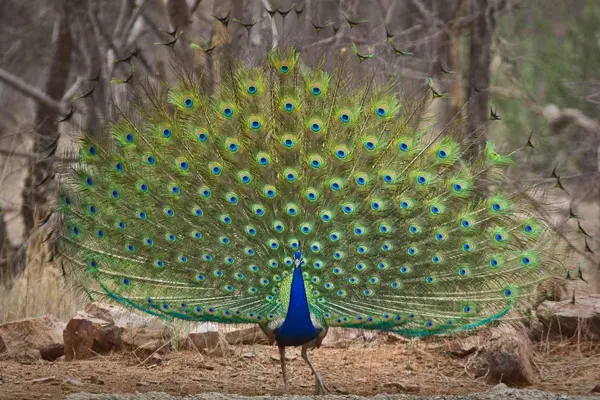
Ecotourism
- Nature Reserves and Parks: Many nature reserves and wildlife parks with Indian Peafowl populations become destinations for ecotourism. Visitors have the opportunity to observe these birds in their natural habitats, fostering appreciation for biodiversity.
- Bird Watching Tours: Indian Peafowls attract birdwatchers to locations where they are commonly found. Bird watching tours, guided by experts, provide enthusiasts with the chance to observe and photograph these magnificent birds.
- Photography and Artistic Pursuits: The striking appearance of Indian Peafowls makes them popular subjects for wildlife photography and artistic endeavors. Ecotourists with an interest in photography often seek out locations where these birds can be observed and documented.
- Local Community Involvement: Ecotourism involving Indian Peafowls can benefit local communities. Communities may develop guided tours, homestays, or cultural experiences that showcase the natural beauty and biodiversity of their region, including these iconic birds.
- Conservation Funding: Revenue generated from ecotourism activities, such as guided tours and entrance fees to protected areas, can contribute directly to conservation efforts. This funding supports habitat preservation, anti-poaching measures, and community-based conservation initiatives.
The educational and ecotourism potential of Indian Peafowl, we can create opportunities for learning, cultural exchange, and sustainable development. This can contribute to protecting these magnificent birds and the ecosystems they call home, while fostering a deeper appreciation for the natural world.
Conclusion
The Indian Peafowl (Pavo cristatus) stands as a captivating and iconic species with multifaceted contributions to the natural world, human culture, and conservation efforts. Its vibrant plumage, intricate behaviors, and adaptability have made it a subject of scientific study, educational programs, and ecotourism initiatives.
From a conservation standpoint, the Indian Peafowl benefits from its “Least Concern” status, reflecting its stable populations and adaptability to diverse habitats. Ongoing research endeavors continue to deepen our understanding of the species, addressing various aspects of its biology, behavior, and interactions with the environment.
The educational role of the Indian Peafowl extends to classrooms, nature centers, and wildlife reserves, where its allure serves as a tool for raising awareness about biodiversity, ecological balance, and the importance of conservation. Furthermore, the bird’s cultural and symbolic significance enhances its educational value, fostering an appreciation for the intersection of nature and human culture.
Ecotourism involving the Indian Peafowl contributes to local economies, conservation funding, and community engagement. Visitors are drawn to the beauty of these birds in their natural habitats, participating in activities such as birdwatching and photography. This not only supports conservation efforts but also promotes sustainable practices and fosters a sense of environmental responsibility.
As we navigate the intricate interplay between human society and the natural world, the Indian Peafowl serves as a beacon for the harmonious coexistence of cultural heritage, ecological awareness, and conservation endeavors. By appreciating and protecting this iconic species, we contribute to the broader tapestry of biodiversity conservation and sustainable living.



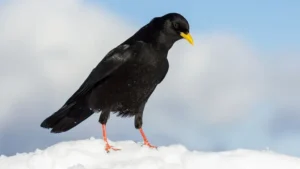
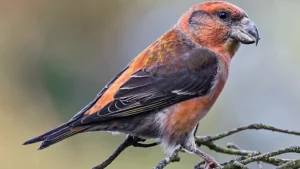
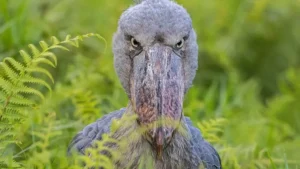
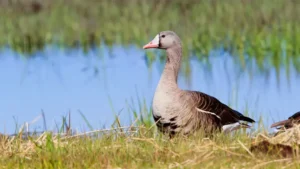
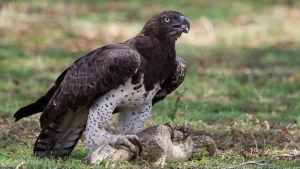
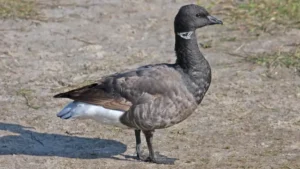
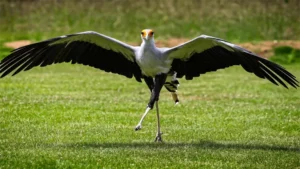
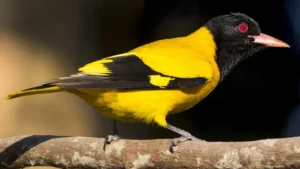
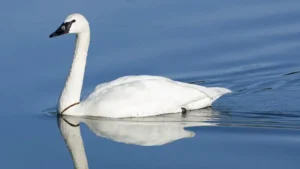
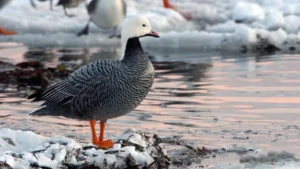
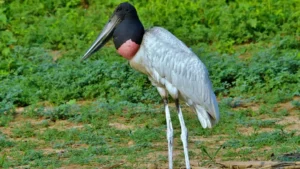
Leave your comment